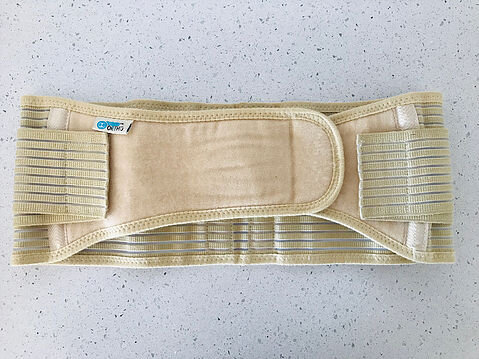Do I need a pregnancy belt?
Pregnancy is a time of incredible transformation for a woman's body, but it can also come with its fair share of aches, pains, and discomforts. Enter pregnancy belts – a popular solution for many expectant mothers seeking relief from the strain and pressure that comes with carrying a growing baby. In this blog, we'll explore everything you need to know about pregnancy belts: when they're used, the importance of trying muscle strengthening exercises first, why moderation is key, and the various types available to suit your needs.
When to Use Pregnancy Belts:
Pregnancy belts are typically used to alleviate discomfort associated with the physical changes that occur during pregnancy. Common reasons women turn to pregnancy belts include lower back pain, pelvic pain, round ligament pain, and abdominal muscle separation (diastasis recti). These belts provide support to the abdomen and lower back, helping to distribute the weight of the baby more evenly and reduce strain on the body.
Importance of Trying Muscle Strengthening First:
Before turning to pregnancy belts, it's essential to explore other options for managing discomfort, such as muscle-strengthening exercises. Strengthening the core and pelvic floor muscles can provide significant relief from pregnancy-related aches and pains by improving stability and support for the growing belly. Additionally, maintaining good posture, staying active, and practicing proper body mechanics can all help reduce the need for external support from pregnancy belts.
Moderation is Key:
While pregnancy belts can offer much-needed relief, it's crucial to use them in moderation to avoid over-reliance and potential muscle wastage. Wearing a pregnancy belt for extended periods can lead to dependence on external support, weakening the muscles over time. To prevent this, it's recommended to wear the belt for short amounts of time during the day, especially during activities that exacerbate discomfort, such as standing for long periods or engaging in strenuous physical activity.
Types of Pregnancy Belts:
There are several types of pregnancy belts available to suit different needs and preferences:
Lower back belt
These belts are great for supporting the lower back. They often have a stiff spine in the back and wrap around the front.
Pubic joint belt
This belt wraps around your pelvis and Velcros up in the front. It pulls the pelvis together taking the strain and reducing the inflammation around the pubic joint.
Abdomen/belly belt
These belts support the growing belly and help reduce the weight of the belly, which may be straining the lower back. Sometimes these belts help reduce round ligament pain too.
Sacroiliac joint belt
These belts reduce the strain and inflammation around the sacroiliac joints at the back of the pelvis.
Conclusion:
In conclusion, pregnancy belts can be valuable tools for managing discomfort during pregnancy, but they should be used judiciously and in conjunction with other strategies such as muscle strengthening exercises. By prioritizing muscle strength and using pregnancy belts in moderation, expectant mothers can find relief from pregnancy-related aches and pains while maintaining optimal muscle function and support. If you're considering using a pregnancy belt, consult with your healthcare provider or a maternity specialist to determine the best approach for your individual needs.

